Apr 11, 2025

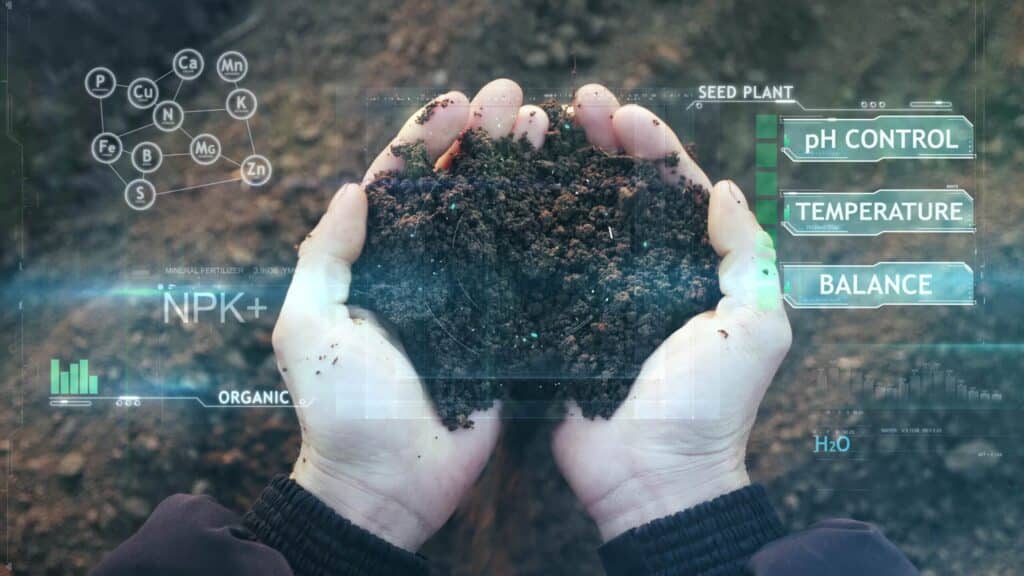


Are your fields ready to quench the thirst of your crop as the season heats up? As we discussed last month, high performance soils do an exceptional job at receiving in and storing soil moisture, whether be it from irrigation or from rainfall. This stored soil water is what your crop relies on for photosynthesis and plant nutrient availability during the growing season. In this blog, we connect the dots between the soil microbiome, soil structure (aka aggregates), and water storage (NDSU Fact Sheet).
The soil microbiome consists of bacteria, fungi, and microalgae and a whole host of other organisms that consume them. Bacteria and fungi are important for decomposing plant and animal residues and also play a critical role in sticking soil particles together. Our research at Heliae Agriculture shows that the application of PhycoTerra products can improve microbial abundance in soil by as much as 18-27x, relative to a control.
Bacteria help soil bind together by secreting glues called extracellularpolysaccharides (EPS) and fungi can weave soil particles together with their net-like extensions called hyphae. As more soil particles stick together, they collectively form aggregates, which begin to give soil structure and desired properties such as increased water holding capacity (Johns 2015). Our research at Heliae™ Ag shows that the application of PhycoTerra products can improve soil aggregate size in soil by as much as 33%, relative to a control.
The PhycoTerra product line of conventional and organic microalgae technology is a proven way to help improve your soil management practices, which is the start to regenerative farming. The inclusion of PhycoTerra or PhycoTerraOrganic into a crop production program a) fuels increased microbial activity that b) drives improved aggregation (Figure 1) which c) helps the soil hold more water (Figure 2).
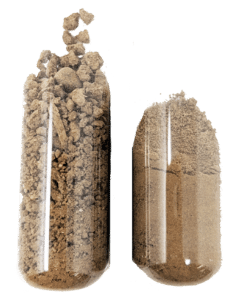
Figure 1 – The application of PhycoTerra (test tube on left) can quickly improve active soil aggregation within the growing season.
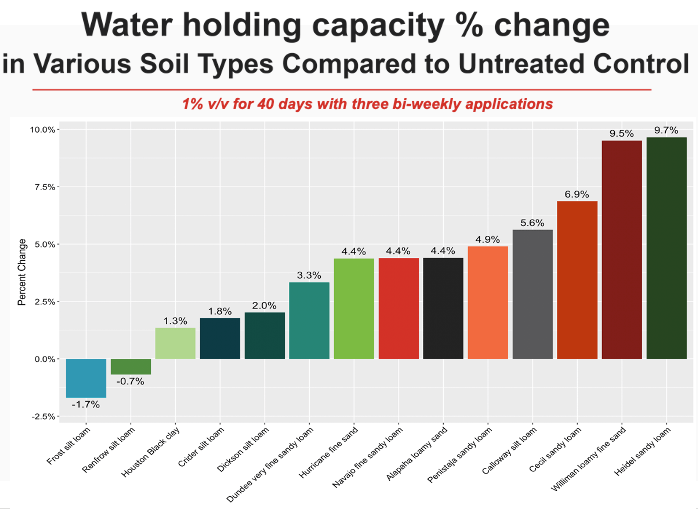
Figure 2 – The application of PhycoTerra can quickly improve the water holding capacity (WHC) of your soil when used in a program across different texture classes. The percentage type at the top of each bar indicates the % improvement in WHC of a soil that has had PhycoTerra applied to it, relative to a control. A negative percent indicates improved drainage in heavier soils.
The connection between soil microbes, soil structure, and water holding capacity is well known (Johns 2015) and will now spend some time explaining why a soil with improved structure can store more water when compared to an untreated control (Figure 3a and 3b). Soils with improved structure and aggregates have increased water holding capacity due to the following characteristics:
Optimum soil moisture is a key indicator of a high-performance soil (Weil and Brady 2017). If your fields are prone to excessive drainage (poor water storage, runoff, and/or evaporation) or ponding (poor infiltration and/or drainage), it may be time to revisit your soil health building program. Remember, there is a strong connection between a healthy soil microbiome, soil aggregate size and abundance, and soil moisture storage dynamics, as outlined here.
Our research at Heliae Agriculture has led to the creation of a quality microalgae product for a variety of sustainable and regenerative soil solutions that can have an immediate impact on your soil structure and soil moisture improvement program. To learn more about our soil microbe food, PhycoTerra and how it can get you started down the road of building a regenerative future, click here.
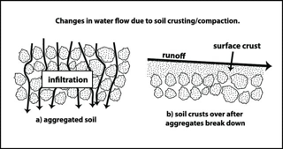
Figure 3a – Soils with good structure can receive in and transmit more water to depth, which can improve overall water holding capacity relative to a soil that loses water due to runoff and/or evaporation. Source: Idowu, O. & Angadi, Sangu. (2013). Understanding and Managing Soil Compaction in Agricultural Fields.
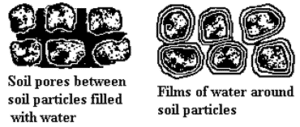
Figure 3b – Soils with good structure can store more infiltrated water in the spaces between the aggregates (left side) and as water films around each individual soil aggregate (right side). Source: http://www.uq.edu.au/_School_Science_Lessons/Soils.html
Note: All trial data is current as of blog posting. For the most up to date trail data, please visit our trials page.
References